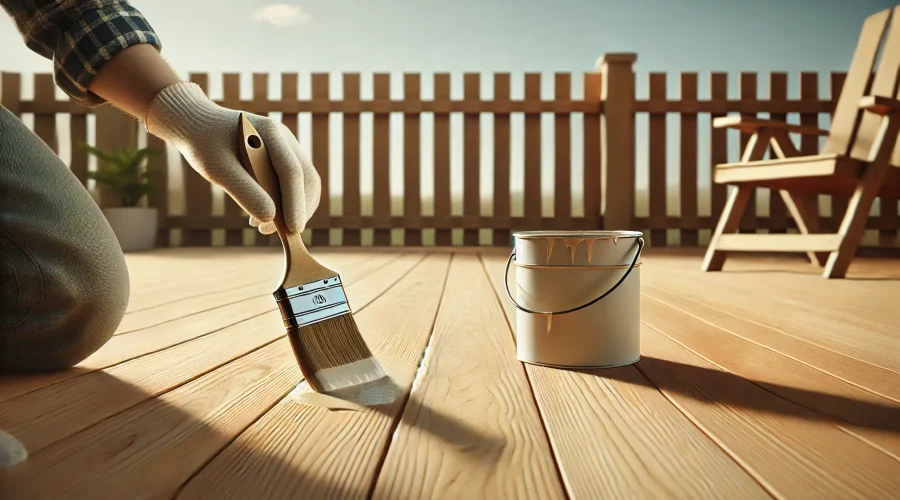How Long to Wait to Stain Pressure-Treated Wood
Pressure-treated wood is among the most popular building materials for outdoor projects because of its durability, resistance to rot, and ability to withstand insects. But to keep it looking the best and ensure that it lasts longer, staining becomes a very important thing. Proper staining, in addition to making the wood look better, protects it from the attacking elements. It is also important to determine when the pressure-treated wood should be stained; the stain would not stick otherwise if stained too early.
In this guide, we’ll cover everything you need to know about when to stain, how to prepare, and tips for achieving a beautiful, long-lasting finish.
Why Timing Matters for Staining Pressure-Treated Wood
There is a process called pressure treating in which preservatives are infused into the wood to ward off decay and pests. Because of the high moisture levels while treating, it is not advisable to immediately stain moisture-treated wood. If done so before proper drying time, the stain would not penetrate but cause spotting and protect less. Therefore, if the wood absorbs it, it gives a greater appearance with longer-lasting durability.
How to Determine When Pressure-Treated Wood is Ready to Stain
It’s going to change according to what kind of wood and treatment is used to treat wood; pressure-treated wood will change with the period of drying. Here’s how to tell if the wood is ready to be stained:
- Water Test: Sprinkle a little water on an area of the wood surface. If the water beads instead of soaking in, this indicates that the wood is still too moist and not ready for staining. If the water penetrates inside after 10 minutes, it is time for staining.
- Touch Test: Just place the finger on the wood surface or simply press the finger into the wood. If it leaves an imprint, it shows that the wood is fresh and wet, not yet seasoned, and hence unfit for staining. If nothing happens, that wood will be ripe for the staining process.
- Kiln-Dried versus Wet-Treated Wood: The kiln-dried wood has been treated and then dried in a kiln, rendering it ready for staining at the moment of purchase. A label or stamp that reads KDAT (Kiln-Dried After Treatment) should be looked for. In contrast, wet-treated wood has considerable moisture in it; it might take weeks or months before it dries completely.
- Climatic consideration: Drying times depend on the climate of where you live; warm and dry areas accelerate it, whereas humid or wet months delay it.
Preparing Pressure-Treated Wood for Staining
Once the wood surface is dried enough and properly, the next stage would be preparing the surface properly for a finish that is smooth and lasts long. Scrub the surface clean of dirt, mildew, and residue remaining there: a wood cleaner and a brush for scrubbing the wood; a pressure washer for external use when stains are quite tough. After washing, let the wood dry completely before proceeding to the next steps. Lightly sand the surface for a smoother feel that improves the uptake of the stain. Pay attention to rough areas and splintered sections that may interfere with an even stain application. Protect your environment by putting painter’s tape or tarps over nearby plants, walls, or other nearby surfaces to prevent accidental staining.
Choosing the Right Stain for Pressure-Treated Wood
The type of stain you select greatly influences the appearance and durability of the wood. Transparent stains are particularly suitable for very new wood, as they would let the natural grain show through. Semi-transparent stains would add subtle color, but still let the texture of the wood show through, making them very versatile for usage. For older wood with its imperfections, the solid stains give the most pigmentation for a uniform, polished look.
If your porch or fencing is set in extensive sunlight, it is recommended to opt for a UV-protected stain to avoid fading effects. Moreover, penetrating oil stains, such as those made from Resende’s oil-based, provide additional durability, while most water-based stains are shallow as well as environment-friendly and can easily be cleaned.
How to Stain Pressure-Treated Wood
Follow these steps for a professional-quality finish:
- Weather wouldn’t be objectionable: Fine, mild temperatures, little humidity, and no rain in the coming few days should select the day. Apply in the absence of direct sunlight to the application; otherwise, the stain dries up rapidly.
- Stain Up: Stain evenly with a pad applicator for paint or a brush. For applications on vertical surfaces like fences, top-down application prevents streaks. Pay close attention to the ends as those areas absorb more stain.
- Generally Enough-One Coat: Most stains call for a single coat, but the manufacturer’s recommendations should always be consulted.
- Drying Time: For complete drying of the stain, wood should not be brought under heavy footfall or external elements. Generally, this takes about 24-48 hours.
How We Can Help with the Best Fence NJ
Staining a new deck, revamping your fence, or taking up any outdoor wood project means doing an excellent job. At fairfield fence company, we understand that your outdoor structures need care. Our experts will help you select the right materials and finishes for your projects, ensuring that those are durable and beautiful at best. Let us help you safeguard an investment while enhancing its value. Contact Best Fence NJ today to learn more about our services and personalized solutions. Following these guidelines will assure you a long life and natural beauty for your pressure-treated wood. Happy staining!






